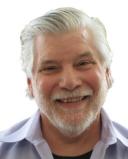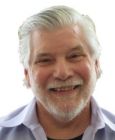Gratitude
Raphael Mechoulam, Father of Cannabis Research, Dead at 92
Gratitude for the man and the researcher.
Posted March 13, 2023 Reviewed by Jessica Schrader
Key points
- The scientific world, and especially cannabis researchers, mourn the death of Rapheal Mechoulam at 92.
- Mechoulam's identification of CBD, THC, anandamide, and CBDA paved the way for understanding our endocannabinoid system.
- No researcher has been as dedicated as Mechoulam to exploring the potential medical benefit of cannabinoid chemistry.
By a series of synchronicities, Raphael Mechoulam’s scientific discoveries intersected with my own interest in cannabis. He was the first to identify and purify the primary psychoactive compound in cannabis (delta-9-tetrahydrocannabinol, or THC) in 1964, only three years before I was introduced to marijuana. I remember every pot smoker’s intoning this scientific name with almost mystical reverence, as though knowing its technical name meant they understood how marijuana worked. We might as well have called it pixie dust for all we really understood. Then, in 1992, Mechoulam was the first to isolate and identify our brain’s neurotransmitter anandamide, which is the key that unlocks cannabinoid receptors, which were discovered in 1988 by Allyn Howlett. Mechoulam’s discovery came only a few years before I was asked to write white papers for the California Society of Addiction Medicine on the medical benefits of cannabis and its potential risks for youth. Raphael Mechoulam lit the way for me throughout my career in addiction psychiatry.
Born in Sofia, Bulgaria, Raphael Mechoulam experienced persecution after Nazis overtook his country and then by communists’ control after WWII. He emigrated to Israel in 1949 where he was attracted to chemistry and gained his first research experience in the Israeli army studying insecticides. Once bitten by the research bug, he had found a passion that he pursued up until his death.
After finishing his Ph.D. and a fellowship at the Rockefeller Institute in New York, Mechoulam was faced with the question of what line of research would establish him professionally. He knew that morphine had been isolated as the main psychoactive ingredient in the opium-rich poppy plant and cocaine had been isolated from coca leaves over a century earlier, but no one had isolated the main psychoactive ingredient in cannabis. He was determined to take on this challenge. He applied to the U.S. National Institutes of Health for a grant but was refused. He was told marijuana was not an American problem. Mechoulam proceeded using 11 pounds of hashish the police in Tel Aviv had confiscated from Lebanese smugglers. By the time he and his team had painstakingly extracted, purified, and identified the molecular structure of THC using mass spectrography, the head of NIH Dan Effrom had been contacted by a senator who learned his son was using marijuana. Effron flew to Mechoulam’s lab in Israel and returned home with 10 mg of THC in his pocket. Mechoulam and the U.S. government’s granting agencies have had a comfortable relationship ever since.
Known as Raphi by his colleagues, Mechoulam moved to Hebrew University of Jerusalem and built an international team of researchers. Observant and nonobservant Jews, Muslims, Christians, Israelis, and Arabs worked side by side, bonded by science and guided by a leader who attracted American, Czech, German, and other researchers from around the world.
When cannabinoid receptors were discovered in the brain, it took Mechoulam only four years to isolate a compound that activated these receptors. The team ground up 10 pounds of pig brain and used various solvents to extract different portions which they passed down thin-layer chromatography columns. In 1992, they reported purification and identification of the molecular structure of an endogenous cannabinoid neurotransmitter. Eleven pounds of pig brain yielded .6 mg of what they called anandamide, a name borrowed from Sanskrit for “supreme joy, or bliss.” Mechoulam explained their choice of the name as being one that only a dedicated laboratory researcher might make when feeling the special joy of being the first to make a significant scientific discovery. “We were quite happy to discover the compound,” he said in a gross understatement.[1]
It is impossible to summarize all of Mechoulam’s contributions. His recognition of the similarity between anandamide and arachidonic acid, a component of all cell membranes, led others to discover the synthetic path of anandamide as well as the structure and function of the brain’s endogenous cannabinoid system. He was the first to isolate and identify the structure of CBD. And as late as 2020 he published a paper on CBDA (cannabidiolic acid), the immediate precursor of CBD. CBDA is between 100-1000 times as strong as CBD for quelling nausea. This purification of CBDA illustrates Mechoulam’s lifelong conviction that cannabinoid chemistry is opening the gateway to a wide array of medicinal products. Raphael is not only the father of cannabis research; he has also been one of the leading visionaries of a bright and significant future for medicinal pharmacology based on cannabinoid chemistry.
We will miss Raphael Mechoulam, but his legacy is solidly in place and carried into the future by thousands of scientists standing on his broad shoulders. Thank you, Raphi.
References
[1] Detailed descriptions of Mechoulam’s monumental discoveries can be found in From Bud to Brain (Timmen Cermak, Cambridge University Press, 2020).


